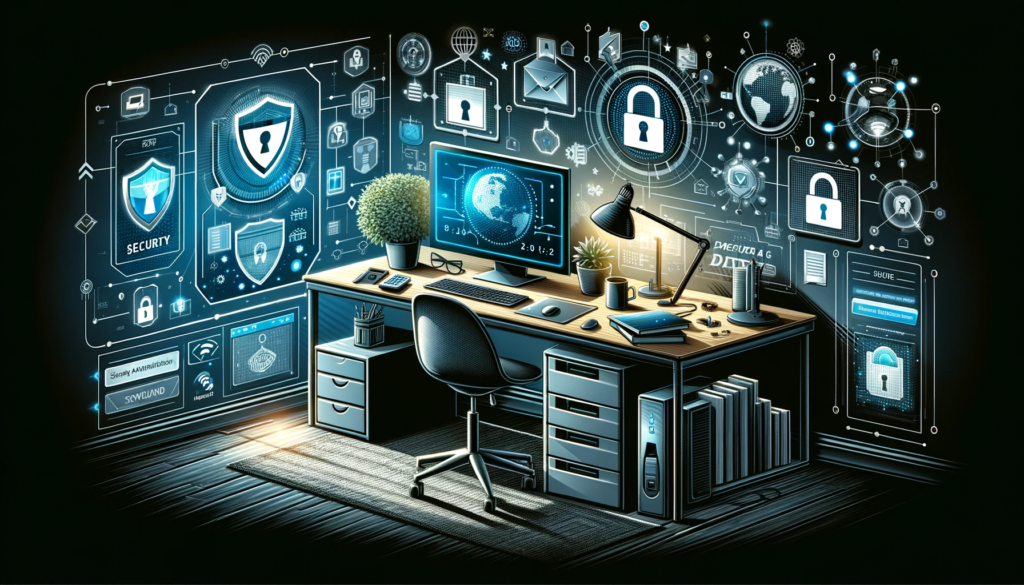
Ensuring cybersecurity for remote workers is crucial in 2023, given the increasing reliance on distributed work environments. Best practices for remote work cybersecurity encompass a range of strategies and tools:
- Use of VPNs: VPNs encrypt online connections, making it difficult for hackers to intercept data. It’s important to choose a reputable VPN provider and ensure correct configuration in collaboration with your company’s IT department.
- Multi-Factor Authentication (MFA): MFA provides an extra layer of security by requiring multiple forms of verification. It’s advised to enable MFA on all work-related accounts and use authentication apps or hardware tokens for stronger security.
- Regular Software Updates: Keeping software and systems updated is critical, as outdated versions can have vulnerabilities. Automatic updates should be enabled, and manual checks for updates should be performed for software that doesn’t update automatically.
- Strong Password Management: Using unique and complex passwords is vital. A password manager can help generate and store strong passwords, and it’s important to avoid using the same password across multiple sites.
- Phishing Attack Awareness: Employees should be cautious of unsolicited emails or messages, especially those asking for sensitive information. Using email filters and reporting suspected phishing attempts to the IT department is recommended.
- Securing Home Networks: Home networks should be secured by changing default router passwords, enabling WPA3 encryption, and regularly updating router firmware.
- Adherence to Company Security Policies: Familiarize yourself with your company’s remote work security guidelines and communicate with the IT department about any concerns.
- Endpoint Security: Implementing end-to-end encryption on all traffic generated from endpoint devices provides a significant layer of protection, complementing VPN use.
- Extended Prevention and Response Platforms: Technologies like XDR/XPR, which leverage AI and cross-correlation techniques, can rapidly detect, investigate, and respond to threats across the entire IT infrastructure.
- Virtual Desktop Infrastructure (VDI): VDI allows employees to securely connect to their organization’s networks and access resources remotely, thus enhancing security resiliency.
- Cloud-based Firewalls (FWaaS): Firewall-as-a-Service models for cloud environments offer centralized policy management, malware and threat protection, and other unified management capabilities.
- Patch Management Systems: Systematic patching, with complete visibility into all patchable IT assets and strong reporting capabilities, is essential for maintaining security.
- Mobile Security Solutions: Mobile device management tools protect corporate data across the mobile attack surface and should offer application protection against malware.
- Email Security: Implementing AI-based email security platforms can detect abnormal behaviors and compromised email accounts, which is crucial as most phishing attempts use sender identity fraud.
- Employee Education: Regularly updating employees on the latest scams, especially industry-specific ones, and educating them on cybersecurity best practices is critical for preventing security breaches.
These practices form a comprehensive approach to maintaining cybersecurity in a remote work setting, addressing various potential vulnerabilities and threats.